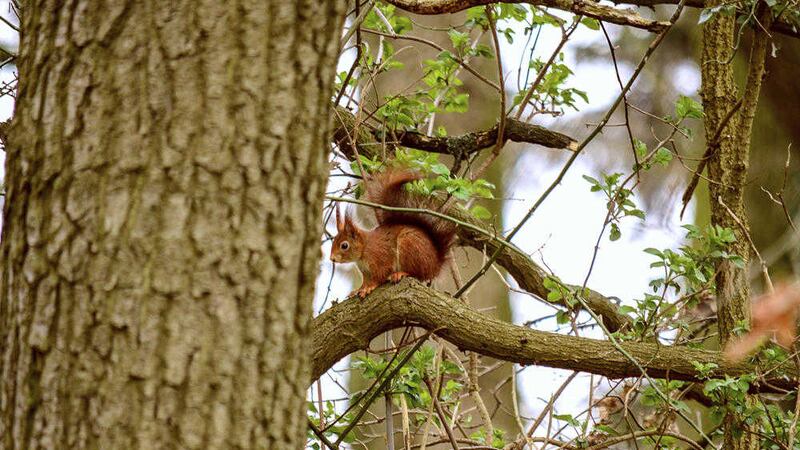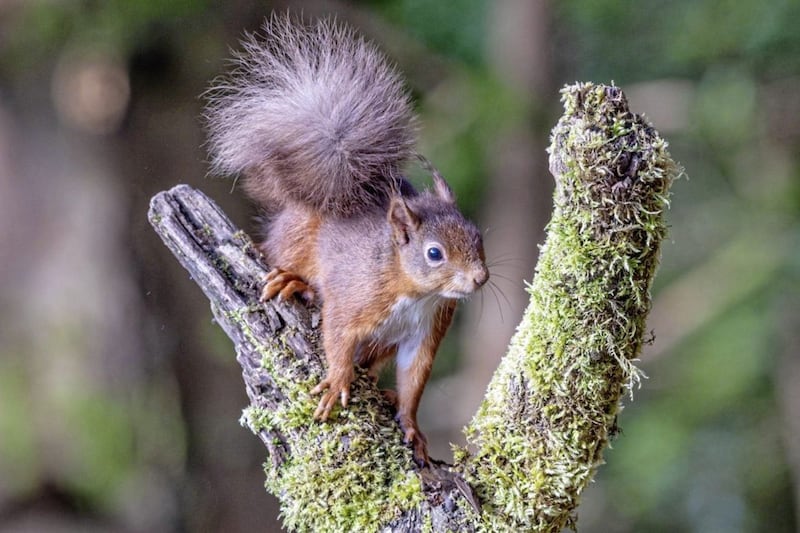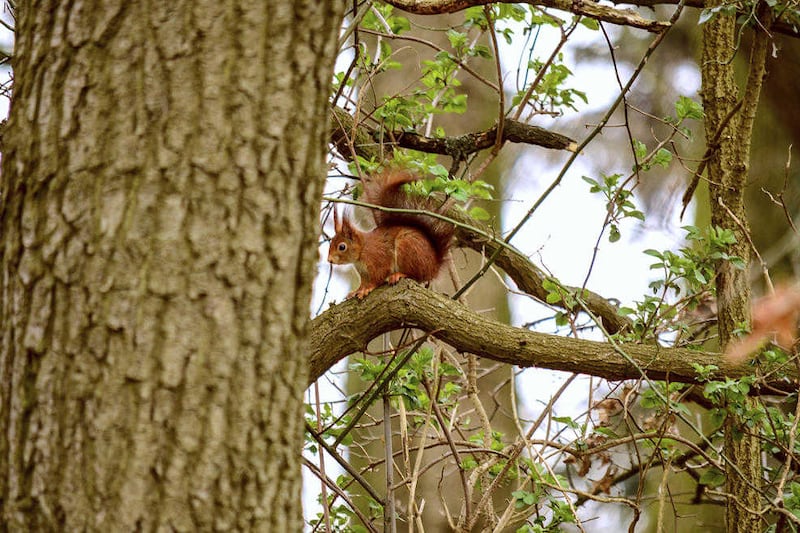THE word squirrel originates from the Greek skiouros, which means literally ‘shadow tail’, from skia, ‘shadow’ and oura, ‘tail’.
Norse mythology talks of a red squirrel, named Ratatoskr, roughly translated as ‘drill-tooth’ who runs up and down ‘the world tree’, Yggdrasil, carrying slanderous and mischievous gossip from the eagle at the top to the serpent who dwells beneath the tree roots.
My parish priest has a particular fascination for the red squirrel (Sciurus vulgaris). I’m not quite sure why he is so taken with this elusive mammal. Perhaps, because of its rarity or the fact it has been seen within our parish. Whatever the reason, the red squirrel with its distinctive red coat is worth appreciating by us all.
The coat varies in colour with the time of year and location, ranging from chestnut brown (summer) through to deep red (winter) with a creamy white underside. It also develops conspicuous brown ear tufts in winter. Found throughout Ireland from coniferous forests to broad leaf woods and parks, the red squirrel eats berries, seeds, hazelnuts and fungi. Known for putting excess food into caches, they will occasionally eat bird eggs and nestlings.
Classed as our native squirrel, records show that it became extinct here in the late 17th century. The reasons for this are not entirely clear though it is thought the capture and killing of the animal for its fur, a valuable commodity at the time, may have been the main factor.
According to author David Cabot the last known date for taxes levied on the export of red squirrel skins was in 1662, after which it died out.
Iora rua in Irish, it was introduced again from Britain in the early 19th century and began to establish itself in suitable habitat throughout Ireland. Richard Barrington, an important naturalist of the day, conducted a study of the mammal in Ireland in the 1800s and documented that the first introductions from England were to Glanmore Estate, Ashford, Co Wicklow between the dates of 1815 and 1825 by a relation of playwright John Millington Synge.
Other introductions followed in counties Dublin, Carlow, Galway, Antrim and Down. While it cannot be ruled out that pockets of native red squirrel populations survived in Ireland up to the 19th century, it appears that the majority of the current population owes its origin to the introduction of the animals from Britain during this period.
By 1910 the red squirrel occupied all counties in Ireland. Unfortunately, the introduction of the grey squirrel (Sciurus carolinensis), a native of deciduous forests of North America, into Castle Forbes, Co Longford, in 1911 was to have a devastating impact on the then well established population of reds.
In deciduous woodland, grey squirrels out compete the reds for available food whereas red squirrels seem to compete more successfully in coniferous woodland. Reds are also susceptible to the often fatal squirrel pox virus, which is carried by the grey squirrel, itself immune to the disease. These factors have contributed to the displacement of the reds with greys across much of Ireland.
Recent work, however, by Emma Sheehy (NUIG, 2013) in the Irish midlands presents evidence linking a decline in grey squirrel numbers to the presence of pinemartens and a subsequent increase in the number of red squirrels in the same area.
In the Poetic Eddas, written accounts of the oral literature of Iceland and a primary source for our knowledge of Norse pagan beliefs, we read that ‘Ratatoskr is the squirrel who there shall run’. Let’s hope our red squirrel also prospers and continues to run.







